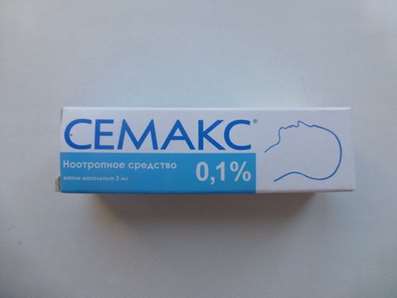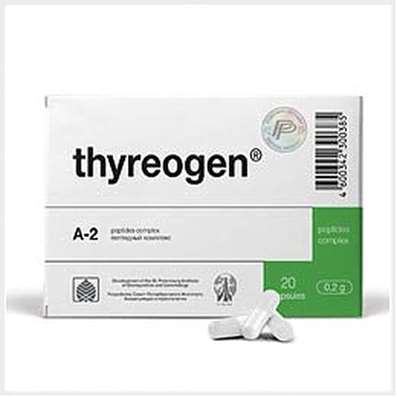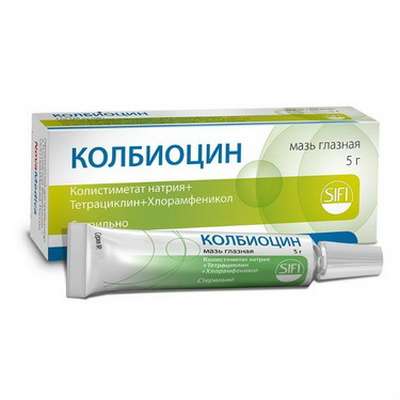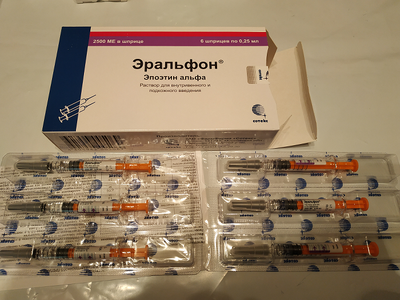Selank
28 Dec 2016
Pharmacological group: tranquilizers
Pharmacological action Selank - a synthetic peptide analogue of the endogenous tafttsin has neurospecific original mechanism of action on the central nervous system and binds to specific receptors on the membranes of nerve cells. It has impact on the exchange of monoamines in the emotional structures of the brain (hypothalamus, diencephalon, the neocortex) and the activity of the brain enzyme tyrosine and tryptophan hydroxylase. Shows tropism to serotonergic system, normalizing the level of serotonin in the brain in experimental conditions caused its decline. Selank stabilizes the processes of excitation and inhibition in the brain and increases the resistance of neurons in the cerebral cortex to the functional load of high intensity. The pharmacological action of the drug spectrum dominated anxiolytic (anti-anxiety) effects by stimulating (activating) component. The drug does not possess hypnotic-sedativeand muscle relaxant properties. Positive effect on the mnemic and cognitive functions of the brain, including in their violation. Activates the processes of learning, memory, analysis and reproduction of information, improves parameters of attention and short-term memory. Improves stability and motivational value of adaptive behavior. Selank has Wegetotropona effect, improves vegetative maintenance of activity in conditions of emotional stress has an impact on optimizing adaptive reserve of the body. Selank is not detect unwanted side and toxic effect at 200-300-fold increase in dose. There has embryotoxic, teratogenic, allergenic, local irritating action does not detect the mutagenic properties. In preparation No adverse long-term effects. Selank not cause drug dependence phenomena. Selank absolute bioavailability when administered intranasally is 92.8%. The drug is rapidly absorbed from the nasal mucosa and after 30 seconds, detected in blood plasma. plasma concentration decreases progressively during 5-5.5 minutes. Metabolites by intranasal route of administration is not detected. It penetrates into the brain tissue. The drug is rapidly distributed to organs and tissues, it is found in unchanged form in a well-vascularized organs (liver, kidney, heart). The daily urine is not determined by any of unchanged drug or metabolites, that is caused by the rapid degradation under the influence of tissue Selank peptidase. Selank - synthetic heptapeptide analogue of the endogenous tetrapeptide tuftsin, with the sequence Thr-Lys-Pro-Arg-Pro-Gly-Pro. Selank sometimes called tuftsin analogue 7. tuftsin Victor Najjar was opened in 1969 (Siemion and Kluczyk, 1999). It produced mainly in spleen and part of the gamma immunoglobulin (IgG). Selank was first synthesized in Russia, when scientists tried to find a version - "superagonists" tuftsin. Selank effects can be divided into two broad categories: neurological and immune-modulating, the first group is associated with exposure to Selank brain derived neurotrophic factor (NBF) and the regulation of conservation enkephalins, and the second reflects a stimulating effect on the immune system Selank cells: phagocytes, neutrophils and others. Selank has anxiolytic, neurotrophic, nootropic, antidepresivnoe, antibacterial and anticancer activities in laboratory and natural conditions, is considered to be a promising agent for the treatment of various acute and chronic diseases. Although the action Selank considered in two categories, the new emerging area of scientific knowledge, called "neuroimmunology" provides a new explanation of the impact of immunomodulators in memory, cognition and behavioral responses.
Glossary
Pro-Gly-Pro, Gly-Pro and Pro-Gly - Eastern European term for the biological family of peptides, which contain all the members of glycine and proline, and affect gastric tissue and contribute to the formation of collagen; It refers to drugs or peptides, which are present in the chain addition Gly-Pro.
Heptapeptide - peptide whose structure contains seven amino acids.
Semax, also known as ACTH (4-10) - a synthetic analogue of the conjugate Gly-Pro ACTH with the structure of MET-GLU-HIS-PHE-PRO-GLY-PRO, is sometimes compared by exposure to Selank.
The growth factor - biological signaling hormone that promotes the growth, reproduction and cell division.
Neuroprotective drugs - are drugs, when administered to cause rapid and / or improve the long-term memory, learning ability, learning and cognitive function.
Neurotrophic drugs - drugs that cause an increase in the size, quantity, or other changes in the type of neural cells; growth factor that acts on the nervous tissue.
NBF - brain-derived neurotrophic factor
Enkephalins - two endogenous peptide (in the form of Leu and Met) binding to delta opioid receptors (in contrast to the action of receptors in Mu-endorphin)
Chemotaxis - the directed movement of cells or cell factor often used to refer to immune action (chemotaxis of leukocytes, neutrophils, macrophages, phagocytes, etc.)
Oligopeptide - peptide whose structure contains 20 or fewer amino acids.
Neuropeptide - locally producing peripheral or peptide which interacts with neural tissue, usually with the neuron.
Neuroimmunology - evolving discipline that studies the relationship between the immune and nervous systems.
Delta-opioid receptors - the receptors for which natural ligands are enkephalins (ligand - atom, ion or molecule is associated with a certain center); have antidepressant effect, involved in the regulation of NBF, cause cognitive improvement, reduce pain, are the protectors of the heart.
Immunoglobulin G (IgG) - protein complex isotopes antibodies consisting of four peptide chains: two heavy and two light located in «Y» -shaped form. IgG is the most common isotype antibody in circulation; It binds pathogens and affects various immune mechanisms.
Structure of Selank
Tuftsin and Selank are different from that present three smaller peptide in its chain. Adding PRO-GLY-PRO makes Selank Gly-Pro: it is more stable for circulation, has a large circulation, resistance to degradation, and greater ability to penetrate into the fabric:
"Useful properties of these compounds, suggesting their possible use as potential therapeutic agents linked to their performance and higher efficiency compared with tuftsin taken separately. (Dzierzbicka et al., 2005). " According to the patent (Goldstein et al., 1992), at a low concentration aqueous solution tuftsin loses biological activity, but chemical or structural integrity, remains unchanged. Selank was part of the intranasal preparations with a concentration of 0.15%, but is effective at lower concentrations, which has been proven in animal experiments in vivo.
Physiological function of Selank
The breadth and diversity of action and Selank tuftsin is best understood in the light of new knowledge about the body. Simon in his review, 2005 "The peptide-molecular bonds between the central nervous system and the immune system," writes: "The central nervous and immune systems for many years were considered independently. Now mutual relations between them have been proved and, as a rule, recognized by most scientists. These connections are realized mainly by various immuno- and neuropeptides. " It is both an immunomodulator and neuropeptide tuftsin Selank and provide new knowledge about the links between these systems. Mück writes about immunomodulatory effects tuftsin in cases of acute bactericidal shortages (eg after surgery), speaking also on its anti-tumor, anti-inflammatory and therapeutic effects (for example, in cases of immune disorders), "Action tuftsin is mediated by specific receptors on the surface of cells [white blood cells and macrophages ]. its anti-tumor activity both in vitro and in vivo has been demonstrated. The operation of tuftsin is its effect on metabolic processes in the basic cell (fosfoglyukonatny cycle; protein A and G, the distribution of Ca ++, redox reactions). These features, coupled with tuftsin low toxicity determine its usefulness for immunotherapy (Mucke, 1984). " Production of cytokines (information peptide molecules) in the cells of the body is the cause of certain inflammatory processes. Neuropeptides, which are not produced by nerve cells in the peripheral tissues, provide feedback to the nervous system (Villiger, 1994).
Villiger (1994) writes: "It is an expression that is the synthesis and secretion of neuropeptides immune system cells or connective tissue cells was recognized only recently ... rapid accumulation of knowledge about the natural metabolism of these highly reactive substances point to new therapeutic possibilities in the field of Neuroimmunology." Immune and nervous systems can operate independently to modulate inflammatory processes by means of various mechanisms, recent studies also indicate that they can modulate inflammation "additive, synergistic or antagonistic" (Villiger 1994).
Research and development of Selank medicines
The study of the relationship between the immune and nervous systems, provides new opportunities for the understanding of diseases such as chronic fatigue syndrome, Lyme disease, lupus, Crohn's disease and other immune disorders affecting the nervous system. It also offers new opportunities for improvement of brain activity by the use of drugs to prevent the degradation of enkephalin or regulatory NBF that can provide an antidepressant effect, help to improve memory and prevent the decline of cognitive capacity during aging. . Kost et al write "has been demonstrated dose-dependent effect when exposed to synthetic Hecto-peptide Semax (Met-Glu-His-Phe-Pro-Gly-Pro) and Selank (Thr-Lys-Pro-Arg-Pro-Gly-Pro) to enkephalin -destroy human serum enzymes. Inhibitory effect of Semax (at IC50, or concentration of half-maximal inhibition of 10 .mu.M) and Selank (IC50 20 .mu.M) is more pronounced than that of puromycin (IC50 10 mM), bacitracin, and some other substances. Furthermore Hecto-peptide their pentapeptide fragments also possess inhibitory activity ;. tri-, tetra- and hexapeptide fragments did not show such effect. As described above enzymes are involved not only in the degradation of enkephalins, and other regulatory peptides, one can assume that one of the mechanisms of biological activity Semax and Selank is their inhibitory activity. " According Nagahara and OE, such modulators NBF as Selank, able to draw age-related cognitive changes, by preventing atrophy, improve cell signaling and gene expression in adults, providing a protective effect on neural circuits involved in the development of Alzheimer's disease: "In old rats infusion NBF is able to draw cognitive impairment, improve age-related changes in gene expression and restore cell signaling. In adult rats and primates, NBF prevent damage caused by the loss of entorhinal cortical neurons. Older primates NBF changes the state of neuronal atrophy and improves age-related cognitive impairment. Taken together, these results indicate that NBF has significant protective effects on participating in the development of Alzheimer's disease the most important neural circuits, through amyloid-independent mechanisms. NBF possible therapeutic use as a potential therapy for Alzheimer's disease (2009). " Selank Exposure to cytokines such as interleukin apparently varies depending on conditions, therefore, immune factors increase its activity in certain situations, that provides bactericidal or antitumor effect and inhibiting others. Thus Selank can be used as a drug for treating inflammatory neurological disorders of immunity, such as multiple sclerosis and other immune disorders, such as progressive primary hypothyroidism. . Basin and others have shown that the use of tuftsin improves the condition of animals with experimental autoimmune encephalomyelitis (EAE), multiple sclerosis, "Introduction tripeptide macrophages / microglia inhibitory factor and tetrapeptide macrophages / microglia-stimulator tuftsin attenuated symptoms of EAE. Dates of activation of macrophages / microglia are critical to the clinical results of EAE. It has been proven that it is possible to prevent progression of the disease in its early stages when changing the timing of the activation of microglia, which, in turn, alter the systemic immune response to the activation of helper 2 genes of T-cells, which help to restore the body after EAE (2007). " Compounds Selank or tuftsin offer new opportunities for administration in connection with what are connected on a molecular level, or enclosed in a liposome system, other drugs such as Azidozimidin (HIV / AIDS) may act on particular cells, which would otherwise difficult to achieve: «IgG-immunomodulatory peptide tuftsin, Thr-Lys-Pro-Arg, is easily recognizable by specific receptors on phagocytes, such as macrophages and their ability to direct the proteins and peptides in these regions. In order to deliver the 3'-azido-3 '-dezoksitimidine (Azidozimidin) in HIV-infected macrophages was synthesized from compound Azidozimidin tuftsin. This compound has characteristic features of both components. As Azidozimidine, it inhibits the activity of reverse transcriptase and HIV-antigen expression, and as tuftsin stimulates IL-1 release from macrophages in mice and increases the immunogenic cell function. Importantly, the compound is not cytotoxic for T-cells. These results indicate that the compound Azidozimidin-tuftsin may have potential in the treatment of AIDS. Selank may offer additional advantages over tuftsin in connection with its gliproglinic structure due to faster and longer and deeper systemic effects, the connection is PRO-GLY-PRO. According to Lucas et al., Tuftsin and its analogues were tested for in vitro efficacy for the treatment of systemic lupus erythematosus (SLE), and indicators showed improved immune response and mobility in patients. Researchers predict improvement in forecasts, the reduction of disease progression and improve control of infections in people with SLE: "The main endogenous tetrapeptide beams and 6 analogs were examined in the laboratory for examination of their stimulatory capacity at the chemotaxis of monocytes in patients with SLE ... Efficiency tetrapeptides chemotaxis also stimulated phagocytosis and random migration of monocytes, although to a lesser degree. Also discussed were the structure-activity relationships and the influence of the clinical stage of the disease. Experimental evidence leads to a favorable outlook for the immunotherapeutic value of these oligopeptides in the fight against infections and progress in the disease in patients with SLE. (1984) ".
Special arrangements anxiolysis: enkephalin preservation
Sokolov et al write:
"A comparative study of the activity of enkephalin-depleting plasma enzymes in open field trials in mice with different phenotypes of emotional and stress reactions showed that Selank at a dose of 100 mg / kg [human equivalent dose of 17 mcg / kg] produces an anxiolytic effect and increases the period of plasma half-life leu-enkephalin ... that is associated with inhibition of enzymes that reduce the level of enkephalin. Impact Selank behavioral responses and plasma activity of enzymes that destroy enkephalin in mice with different phenotypes of emotional and stress reactions. (Sokolov et al., 2002). "
Guidelines for the diagnosis of mental disorders and the statistics diagnosed patients experiencing anxiety or phobia, who has been seen reduced total enkephalin activity, as well as the weakening of the half-life entsefalina:
"Heptapeptide Selank (Thr-Lys-Pro-Arg-Pro-Gly-Pro), which weakens the behavioral responses of anxiety and does not cause side effects typical of the majority of drugs, dose-dependently inhibits the enzymatic hydrolysis of enkephalin plasma (IC50, or concentration of half-maximal inhibition is 15 pM). Selank considered more powerful than the peptidase inhibitors bacitracin and puromycin in suppressing enkefalinazisa. The results indicate that high efficiency in the treatment Selank anxiety and phobic disorders, including generalized anxiety, related to its ability to inhibit the enkephalin hydrolysis. (Zozulya et al.). "
It is assumed that the inhibition of enzymes, reducing the level of enkephalins - Selank independent action in relation to the immunomodulatory processes, but epidemiological studies of increased cases of depression or anxiety after injury, often accompanied by a decrease in the activity of the immune system and increase the likelihood of infection, deserve further evaluation of dual effects tuftsin / Selank. This may lead researchers to consider Selank or similar peptides as dual use of antidepressants with favorable immunomodulatory properties.
Double action Selank associated with both the modulation of the immune response, and with the improvement of cognitive parameters may make it an attractive destination for persons suffering from acute injuries.
NBF, injury, insomnia, and Neuro-topia
One of the links connections between immune and endocrine systems is immune and endocrine response as a result of sleep deprivation, which also is inflammatory in nature:
"The links between the immune and endocrine systems are another important point in relation to which cytokines affect sleep and, on the contrary, sleep and related processes, including changes in neurotransmitters and neuronal activity, can affect the level of cytokines. The ability to improve sleep for release and / or production of certain cytokines ... may indicate an increase in sleep-related activity of specific immune system. Furthermore, in humans after the primary response to antigens by increased sleep subsequent viral challenge. In animals, the results are less consistent and focused on secondary aspects. Sleep-related cytokine levels may be mediated by modulation of the endocrine parameters. (Marshall and Bourne, 2002). "
Selank promotes the formation of memory neurons, reduces inflammation, modulate endocrine (and paracrine) factors related to the immunological and neurological changes and improves the results in case of injury. In addition, indirectly through NBF-controlled action Selank it demonstrates the same properties as that of conventional antidepressants:
. Russo-Neustadt and others write that:
"These results suggest the possibility that increased expression NBF may be important in the treatment of antidepressants. Expression induction treatment for NBF activity / pharmaceutical combination is understood as an important tool for further study as a potential drug for the treatment and management of depression. (2001) ".
Garcia et al. Note that "a large body of evidence has established the link between stressful life events and the corresponding development or worsening of depression," and then proceeds to establish a link between the disabled responses to environmental stimuli, cognitive decline and memory functions, as well as metaplastichnosti decline. "
Garcia et al. Write that "in response to the stress and depression of neurons atrophy and loss of cells" (2001). Regulation of NBF, and possibly other mechanisms that modulate neurotrophic growth factor, are another mechanism Selank offering the advantage in post-traumatic or depressed state of the patient. Neurogenesis, as well as the prevention of neuronal loss are related to this mechanism (2001).
Waldman and OE, parameters studied when exogenous tuftsin "unavoidable stress" and found that at doses of 20-250 mg / kg was observed behavioral effect of reducing the time and increasing the time of immobilization of the active phase (rats were divided into groups, one of which was Enter the 6-hydroxydopamine, disruption agent terminals catecholamines and the other not; the first was called "unemotional" one and the second "emotional"), which is mediated by catecholaminergic activity, coupled with tyrosine hydroxylase, which correlates the effectiveness of antidepressants and stimulants in humans.
Nootropic effects of Selank
Mechanisms established anxiolytic (anti-enkephalinases) and the antidepressant (NBF-regulation) Selank effect, can be used to improve brain health. Semenova et al. Assigned tuftsin and its analog in rats by injection (300 mg / kg, which is equivalent to 50 mg / kg in humans) and showed a significant gain in research activities, as well as stimulating and preventive effect, reducing anxiety and antidepressant effects, improving skills learning and memory:
"It was found that the appointment of the peptides increases the desire to research activity in rats. TP-1 Active influence continued for 6 hours. Daily administration tuftsin or TP-1 for 15 min before the experiment facilitated training and stabilized the conditioned responses to food reinforcement. Experimental animals reacted to emotionally negative influence is much weaker than the controlled, which is caused by a sharp reduction in control over the amount of food reinforcement. (1988) ". In a later work (2010), Semenov has demonstrated long-term (30 days) the possibility of the appointment Selank animals, with the changes marked in the metabolism of serotonin, a reaction to the food reward and memory consolidation:
"Effects Selank (Thr-Lys-Pro-Arg-Pro-Gly-Pro), is a synthetic derivative of the endogenous tetrapeptide tuftsin, training and processes associated with memory, and metabolism of serotonin (5-HT) have been experimentally investigated on Wistar rats. The animals were trained in using food rewards, and spent 30 samples per day. After the 10th study began Selank administered (300 mg / kg) or saline. Development of a conditioned reflex to the food reward was continued 30 minutes later. Animals were tested after 24 hours, 7 and 30 days after treatment. Selank activated single injection of serotonin metabolism in the hypothalamus and brain caudal epididymis from 30 minutes to 2 hours. It was found that Selank induces an increase in the storage stability of 30 days. These results provide direct evidence that Selank entered during the consolidation phase, can improve memory processes. Selank nootropic activity, probably due to its obvious influence on the levels of serotonin and its metabolites in the brain. "
The authors express greater confidence in the designation Selank as "nootropic" in connection with demonstrated improvements in testing procedures, longer and more time-bound action. The metabolism of serotonin also provide additional physiological basis for the antidepressant effect Selank.
Availability of Selank
Selank used for anxiety and anxiety-asthenic disorders, appropriate diagnostic criteria for generalized anxiety disorder; neurasthenia; adaptation disorders. The drug prescription.

 Cart
Cart





